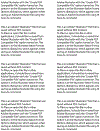SARS-CoV-2 entry factors are highly expressed in nasal epithelial cells together with innate immune genes
- PMID: 32327758
- PMCID: PMC8637938
- DOI: 10.1038/s41591-020-0868-6
SARS-CoV-2 entry factors are highly expressed in nasal epithelial cells together with innate immune genes
Abstract
We investigated SARS-CoV-2 potential tropism by surveying expression of viral entry-associated genes in single-cell RNA-sequencing data from multiple tissues from healthy human donors. We co-detected these transcripts in specific respiratory, corneal and intestinal epithelial cells, potentially explaining the high efficiency of SARS-CoV-2 transmission. These genes are co-expressed in nasal epithelial cells with genes involved in innate immunity, highlighting the cells' potential role in initial viral infection, spread and clearance. The study offers a useful resource for further lines of inquiry with valuable clinical samples from COVID-19 patients and we provide our data in a comprehensive, open and user-friendly fashion at www.covid19cellatlas.org.
Figures





Update of
-
SARS-CoV-2 Entry Genes Are Most Highly Expressed in Nasal Goblet and Ciliated Cells within Human Airways.ArXiv [Preprint]. 2020 Mar 13:arXiv:2003.06122v1. ArXiv. 2020. Update in: Nat Med. 2020 May;26(5):681-687. doi: 10.1038/s41591-020-0868-6. PMID: 32550242 Free PMC article. Updated. Preprint.
Comment in
-
Options for Personal Protective Equipment During the SARS-CoV-2 Pandemic Used in New Orleans, Louisiana.J Allergy Clin Immunol Pract. 2020 Sep;8(8):2481-2483. doi: 10.1016/j.jaip.2020.05.021. Epub 2020 May 30. J Allergy Clin Immunol Pract. 2020. PMID: 32485236 Free PMC article. No abstract available.
-
Clinical characteristics associated with persistent olfactory and taste alterations in COVID-19: A preliminary report on 121 patients.Am J Otolaryngol. 2020 Sep-Oct;41(5):102548. doi: 10.1016/j.amjoto.2020.102548. Epub 2020 May 26. Am J Otolaryngol. 2020. PMID: 32516656 Free PMC article. No abstract available.
Similar articles
-
Single-cell RNA sequencing of SARS-CoV-2 cell entry factors in the preconceptional human endometrium.Hum Reprod. 2021 Sep 18;36(10):2709-2719. doi: 10.1093/humrep/deab183. Hum Reprod. 2021. PMID: 34329437 Free PMC article.
-
Immunohistochemical Study of SARS-CoV-2 Viral Entry Factors in the Cornea and Ocular Surface.Cornea. 2020 Dec;39(12):1556-1562. doi: 10.1097/ICO.0000000000002509. Cornea. 2020. PMID: 32826650
-
Human Nasal Epithelial Cells Sustain Persistent SARS-CoV-2 Infection In Vitro, despite Eliciting a Prolonged Antiviral Response.mBio. 2022 Feb 22;13(1):e0343621. doi: 10.1128/mbio.03436-21. Epub 2022 Jan 18. mBio. 2022. PMID: 35038898 Free PMC article.
-
Perspective of the Relationship between the Susceptibility to Initial SARS-CoV-2 Infectivity and Optimal Nasal Conditioning of Inhaled Air.Int J Mol Sci. 2021 Jul 24;22(15):7919. doi: 10.3390/ijms22157919. Int J Mol Sci. 2021. PMID: 34360686 Free PMC article. Review.
-
Natural Killer Cells in SARS-CoV-2 Infection: Pathophysiology and Therapeutic Implications.Front Immunol. 2022 Jun 30;13:888248. doi: 10.3389/fimmu.2022.888248. eCollection 2022. Front Immunol. 2022. PMID: 35844604 Free PMC article. Review.
Cited by
-
To study the impact of COVID-19 on the epidemiological characteristics of allergic rhinitis based on local big data in China.Sci Rep. 2024 Oct 23;14(1):25101. doi: 10.1038/s41598-024-76252-w. Sci Rep. 2024. PMID: 39443644 Free PMC article.
-
A complex remodeling of cellular homeostasis distinguishes RSV/SARS-CoV-2 co-infected A549-hACE2 expressing cell lines.Microb Cell. 2024 Oct 8;11:353-367. doi: 10.15698/mic2024.10.838. eCollection 2024. Microb Cell. 2024. PMID: 39421150 Free PMC article.
-
A new phenotype of patients with post-COVID-19 condition is characterised by a pattern of complex ventilatory dysfunction, neuromuscular disturbance and fatigue symptoms.ERJ Open Res. 2024 Oct 7;10(5):01027-2023. doi: 10.1183/23120541.01027-2023. eCollection 2024 Sep. ERJ Open Res. 2024. PMID: 39377086 Free PMC article.
-
Androgen Drives the Expression of SARS-CoV-2 Entry Proteins in Sinonasal Tissue.J Clin Transl Pathol. 2023;3(2):49-58. doi: 10.14218/jctp.2022.00031. Epub 2023 May 1. J Clin Transl Pathol. 2023. PMID: 39363910 Free PMC article.
-
COVID-19 and Carcinogenesis: Exploring the Hidden Links.Cureus. 2024 Aug 31;16(8):e68303. doi: 10.7759/cureus.68303. eCollection 2024 Aug. Cureus. 2024. PMID: 39350850 Free PMC article. Review.
References
-
- World Health Organization. (2020). Retrieved from https://www.who.int/emergencies/diseases/novel-coronavirus-2019/technica...
Methods-only References
-
- Kucharski AJ & Althaus CL Euro surveillance : bulletin Europeen sur les maladies transmissibles 20, 14–18 (2015). - PubMed
-
- Xu Y, et al. Nature medicine (2020).
-
- Guan WJ, et al. N Engl J Med (2020).
Grants and funding
- MC_PC_17230/MRC_/Medical Research Council/United Kingdom
- MC_PC_12009/MRC_/Medical Research Council/United Kingdom
- K08 HL130595/HL/NHLBI NIH HHS/United States
- R01 HL127349/HL/NHLBI NIH HHS/United States
- P30 DK043351/DK/NIDDK NIH HHS/United States
- MR/S035907/1/MRC_/Medical Research Council/United Kingdom
- U01 HL148856/HL/NHLBI NIH HHS/United States
- NC/T2T0419/NC3RS_/National Centre for the Replacement, Refinement and Reduction of Animals in Research/United Kingdom
- K08 HL146943/HL/NHLBI NIH HHS/United States
- U19 AI135964/AI/NIAID NIH HHS/United States
- MR/K017047/1/MRC_/Medical Research Council/United Kingdom
- MR/R006237/1/MRC_/Medical Research Council/United Kingdom
- R24 HD000836/HD/NICHD NIH HHS/United States
- MR/P009581/1/MRC_/Medical Research Council/United Kingdom
- MR/S005579/1/MRC_/Medical Research Council/United Kingdom
- PG/16/47/32156/BHF_/British Heart Foundation/United Kingdom
- U01 HL145567/HL/NHLBI NIH HHS/United States
- G0701448/MRC_/Medical Research Council/United Kingdom
- MR/S036334/1/MRC_/Medical Research Council/United Kingdom
- R01 HL145372/HL/NHLBI NIH HHS/United States
- P01 AG049665/AG/NIA NIH HHS/United States
- G0900879/MRC_/Medical Research Council/United Kingdom
- MR/S035826/1/MRC_/Medical Research Council/United Kingdom
- U24 AI118672/AI/NIAID NIH HHS/United States
- WT_/Wellcome Trust/United Kingdom
- SP/19/1/34461/BHF_/British Heart Foundation/United Kingdom
- R01 HL146557/HL/NHLBI NIH HHS/United States
- R56 HL135124/HL/NHLBI NIH HHS/United States
- PB-PG-1215-20037/DH_/Department of Health/United Kingdom
- MR/R015635/1/MRC_/Medical Research Council/United Kingdom
- NC/N001540/1/NC3RS_/National Centre for the Replacement, Refinement and Reduction of Animals in Research/United Kingdom
LinkOut - more resources
Full Text Sources
Other Literature Sources
Molecular Biology Databases
Miscellaneous

